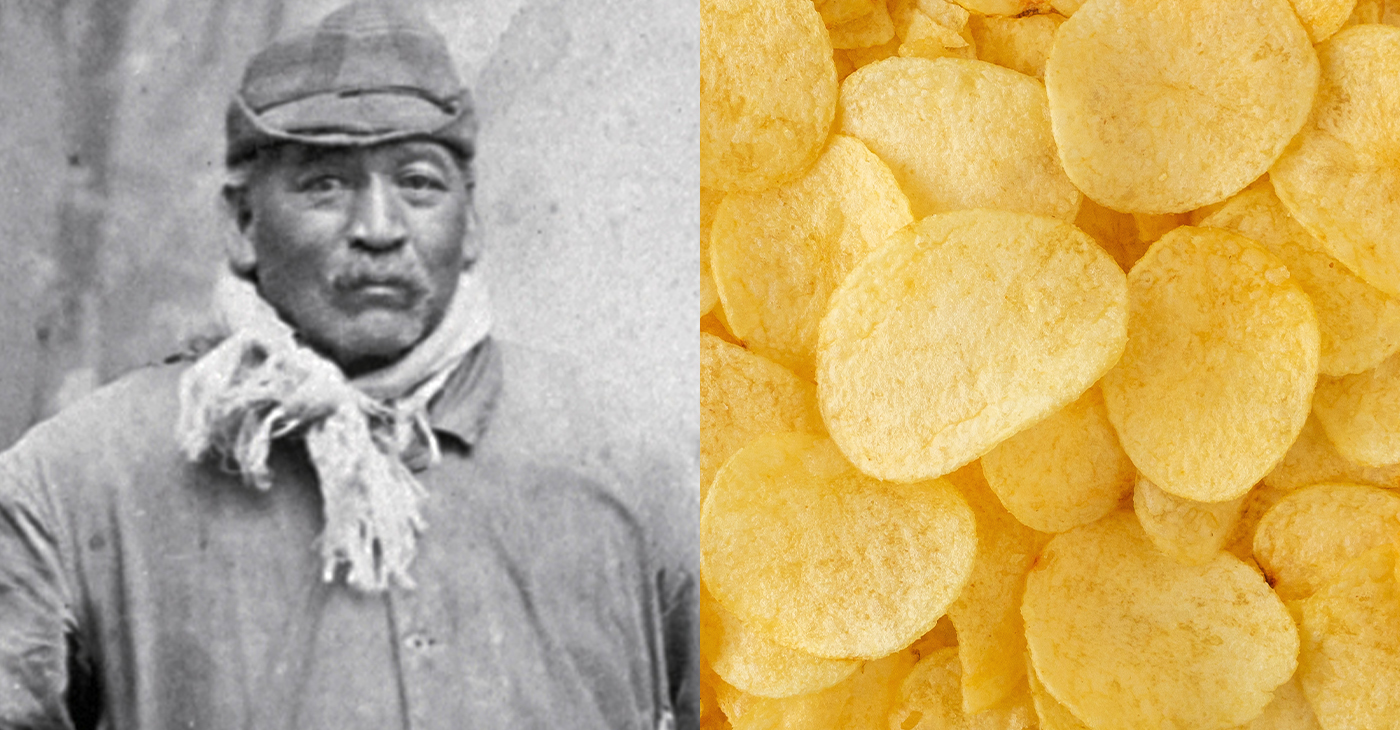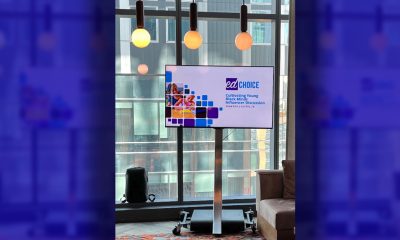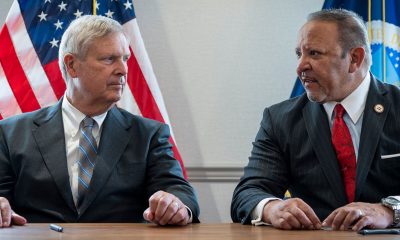Black History
Chef George Crum: A Deep-Fried Stunt Gone Right
During his youth, George Crum (1824–1914), born George Speck in Saratoga Lake, N.Y., worked as a guide in the Adirondack Mountains and as an Indian trader. Over time, he began to realize his passion for cooking and focused on working as a chef. The restaurant and the success of his snack dish were a part of his dream; he had created a luxury.

By Tamara Shiloh
Cornelius Vanderbilt, a steamship owner, sat in the dining room of Moon’s Lake House in Saratoga Springs, N.Y., a high-end restaurant that catered to wealthy Manhattan families. It was the summer of 1853 and working in the kitchen was George Crum (1824–1914), the establishment’s cook.
The meal being prepared was likely woodcock or partridge from the restaurant’s grounds, served with French fries. But when the dish was served, Vanderbilt refused it, arguing that “the French fries are too thick.”
This angered Crum so much so that he would prepare the potatoes again, but this time cut into slices as thin as he could make them. He dipped them in the hot oil, frying them to a crisp. He placed the browned and brittle rounds on the plate before sending it to the table.
To Crum’s surprise, Vanderbilt was “thrilled with the novel snack.” Crum’s dish soon became a regular part of the Moon’s Lake House menu. Crum was onto something and wanted more.
By 1860, Crum opened his own restaurant: Crum’s Place. There, millionaires like Vanderbilt stood in line for hours for what Crum dubbed Saratoga Chips.
During his youth, Crum, born George Speck in Saratoga Lake, N.Y., worked as a guide in the Adirondack Mountains and as an Indian trader. Over time, he began to realize his passion for cooking and focused on working as a chef. The restaurant and the success of his snack dish were a part of his dream; he had created a luxury.
Unfortunately, he never patented Saratoga Chips, and never distributed them outside of New England. This opened the door for others to claim to have been the snack’s original inventor, fueling the debate regarding that person’s true identity.
In 1895, William Tappendon began to make the first attempt to place potato chips on local grocery store shelves. In 1921, the Hanover Home Potato Chip Company was established. Soon grocers in numerous areas around the United States were selling chips in bulk. Laura Scudder began putting potato chips into wax paper bags in 1926, giving birth to the bag-of-chips concept.
Herman Lay founded Lay’s in 1932 in Nashville, Tenn., which led to phenomenal success not only for him, but also other potato-chip makers.
Historian Dave Mitchell researched those who took credit for the creation of the potato chip, including Vanderbilt, both of the Moons, Crum’s sister Kate Wicks, the restaurant’s manager Hiram Thomas, and various Lake House cooks.
His research included the possibility that the potato chip was not invented in Saratoga at all, though it certainly earned its popularity there. The potato chip’s true origin, Mitchell concluded, “will probably never be known.”
Crum closed his restaurant in 1890 and died in 1914 at the age of 90. More than 150 years later his delicacy has gone on to even greater fame. Today, Americans alone consume about 1.5 billion pounds of potato chips every year.
Kids can learn more about George Crum’s story in Anne Renaud’s fictional picture book “Mr. Crum’s Potato Predicament.”
Activism
Oakland Post: Week of April 24 – 30, 2024
The printed Weekly Edition of the Oakland Post: Week of April 24 – 30, 2024

To enlarge your view of this issue, use the slider, magnifying glass icon or full page icon in the lower right corner of the browser window. ![]()
Activism
Oakland Post: Week of April 17 – 23, 2024
The printed Weekly Edition of the Oakland Post: Week of April 17 – 23, 2024

To enlarge your view of this issue, use the slider, magnifying glass icon or full page icon in the lower right corner of the browser window. ![]()
Black History
Matthew Henson: Explorer Extraordinaire
Matthew Henson, a trailblazing explorer who overcame countless obstacles to leave an incredible mark on history. Born on August 8, 1866, in Charles County, Maryland, his journey is a testament to the power of determination and the spirit of adventure.

By Tamara Shiloh
Matthew Henson, a trailblazing explorer who overcame countless obstacles to leave an incredible mark on history. Born on August 8, 1866, in Charles County, Maryland, his journey is a testament to the power of determination and the spirit of adventure.
Henson’s life began amidst the backdrop of post-Civil War America, where opportunities for African Americans were scarce. From a young age, he possessed an insatiable curiosity about the world beyond his small town. At the age of 12, he embarked on a journey that would change the course of his life forever when he joined a merchant ship as a cabin boy.
His most famous expedition was his journey to the Arctic with renowned explorer Robert E. Peary. In 1887, Henson joined Peary’s crew as a seaman and quickly proved himself to be invaluable with his skills as a navigator and craftsman. Over the course of several expeditions, Matthew endured extreme cold, treacherous terrain, and grueling conditions as he and Peary sought to reach the elusive North Pole.
In 1908–09, Peary set out on his eighth attempt to reach the North Pole. It was a big expedition, with Peary planning to leave supplies along the way. When he and Henson boarded their ship, the Roosevelt, leaving Greenland on August 18, 1909, they were joined by a large group. This included 22 Inuit men, 17 Inuit women, 10 children, 246 dogs, 70 tons of whale meat, blubber from 50 walruses, hunting gear, and tons of coal.
In February, Henson and Peary left their anchored ship at Ellesmere Island’s Cape Sheridan, along with the Inuit men and 130 dogs. They worked together to set up a trail and supplies along the way to the Pole.
Peary picked Henson and four Inuit people to join him in the final push to the Pole. However, before they reached their destination, Peary couldn’t walk anymore and had to ride in a dog sled. He sent Henson ahead to scout the way. In a later interview with a newspaper, Henson recalled being in the lead and realizing they had gone too far. The group turned back, and Henson noticed his footprints helped guide them to their destination. At that location, Henson planted the American flag.
Henson’s legacy extends far beyond his expeditions to the Arctic. He shattered racial barriers in the world of exploration and inspired countless individuals, regardless of race, to dream big and pursue their passions. In 1937, he was finally recognized for his achievements when he was inducted into The Explorers Club, an organization dedicated to promoting scientific exploration and field research.
Matthew Henson died in the Bronx, New York, on March 9, 1955, at the age of 88.
-

 Activism4 weeks ago
Activism4 weeks agoOakland Post: Week of March 27 – April 2, 2024
-

 #NNPA BlackPress4 weeks ago
#NNPA BlackPress4 weeks agoBeloved Actor and Activist Louis Cameron Gossett Jr. Dies at 87
-

 Community1 week ago
Community1 week agoFinancial Assistance Bill for Descendants of Enslaved Persons to Help Them Purchase, Own, or Maintain a Home
-

 Activism3 weeks ago
Activism3 weeks agoOakland Post: Week of April 3 – 6, 2024
-

 Business2 weeks ago
Business2 weeks agoV.P. Kamala Harris: Americans With Criminal Records Will Soon Be Eligible for SBA Loans
-

 Activism2 weeks ago
Activism2 weeks agoOakland Post: Week of April 10 – 16, 2024
-

 Community2 weeks ago
Community2 weeks agoAG Bonta Says Oakland School Leaders Should Comply with State Laws to Avoid ‘Disparate Harm’ When Closing or Merging Schools
-

 Community7 days ago
Community7 days agoOakland WNBA Player to be Inducted Into Hall of Fame






















































